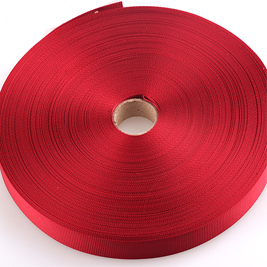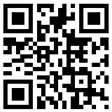One of the complete knowledge of printing types. There are many kinds of bag ribbon printing. Today, it is divided into two parts for everyone to talk about. If you like it, you can have a detailed look. It should be helpful to you. Here is the first part. Bag webbing transfer printing. The pigment is printed on the paper by printing method to make transfer printing paper, and then the color is transferred to the fabric by high temperature (heating and pressing on the back of the paper). It is generally used for chemical fiber fabrics, characterized by bright colors, fine layers, lifelike patterns, and strong artistry. However, this process is currently only applicable to a few synthetic fibers such as polyester. Transfer printing process is simple, investment is small and production is flexible. It is popular in the market at present But to be honest, compared with other types of printing, the price of this transfer printing is a little high, but it has a certain level.

Not only the production process is complex, but also the packaging process is very complicated. Only the webbing that has passed the inspection can be packaged out of the warehouse, otherwise it will be treated as defective products. The specific packaging process is as follows: 1. The process control method: 1. The surface of each winding tape must be smooth and flat (except for special webbing); Those who cannot be involved in substandard products shall be held accountable according to the seriousness of the case. Knot: ≤ 3/100Y, ≤ 2/50Y; Short code: ± 0.5/100Y; Each knapsack strap must have the label of the tape coiler. Inspection according to the customer's requirements: for example, 336, 217, 115, 314, 108, 114, 384, 206, 419, 122 adhesive paper and rubber hose, no pins can be used;

What type is this? For example: ribbon, plaid belt, jacquard webbing, cotton belt and other products, these should be distinguished first. What is the size? The width and thickness should be understood clearly. What material is this ribbon? Different materials mean different prices. What color is it? How many colors are there? This also needs to be made clear. For example, single color ribbons should be cheaper, while multi color ribbons must be more expensive. Do you need dyeing? Some ribbons are dyed by the customer, and the price of dyeing is different.

What are the characteristics of the edging webbing: moisture retention: because the pure cotton edging webbing is a poor conductor of heat and electricity, the heat conductivity coefficient is extremely low, and because the cotton webbing itself has the advantages of porosity and high elasticity, a large amount of air can be accumulated between the webbing, and the air is a bad conductor of heat and electricity, the pure cotton webbing has good moisture retention, and people feel warm when using the pure cotton webbing. Hygiene: pure cotton edging webbing is a natural fiber, which is mainly composed of cellulose, a small amount of waxy substances, nitrogen and pectin.

Shenyang customized Glass cv webbing Clear drawings within parameters: clear the drawings within the set range of longitude and latitude. Multiple maps to one map: insert multiple maps into one map in the longitudinal direction. One manufacturing to multiple manufacturing: turn in one drawing and disassemble it into multiple pieces in the longitudinal direction. Graph merging: after multiple graphs are handed over and inserted into one (that is, multiple weaves are transformed into one weaves), the whole warp is deleted. Computer jacquard webbing drawing sequence: analyze the weave rule of the jacquard webbing, and draw the "high" part of all characters or patterns in a cycle according to the weave rule determined by analysis and combined with the actual fabric, Shenyang customized Glass cv webbing manufactor Then draw the "high" part of the bottom color (color other than text or pattern) in a cycle according to the organization rule. After all the "high" parts are drawn, draw the "low" part of the pattern and bottom according to the analyzed organization rule until the drawing is completed.

The narrow Shenzhen ribbon or tubular fabric is made from various yarns. There are many kinds of belt fabrics, which are widely used in clothing, shoes, bags, industry, agriculture, military supplies, transportation and other industrial sectors. In the 1930s, it was all handmade workshops that produced exquisite pictures of ribbons. The raw materials were cotton thread and hemp thread. After the founding of the People's Republic of China, the raw materials for ribbon gradually developed to nylon, vinylon, polyester, polypropylene, spandex, viscose, etc., forming three major types of technology: weaving, knitting, knitting. The fabric structure includes plain weave, twill, satin, jacquard, double-layer, multi-layer, tubular and combined weave.






